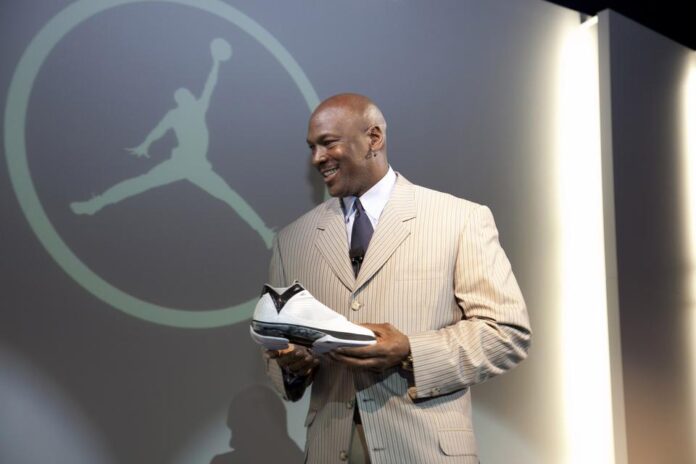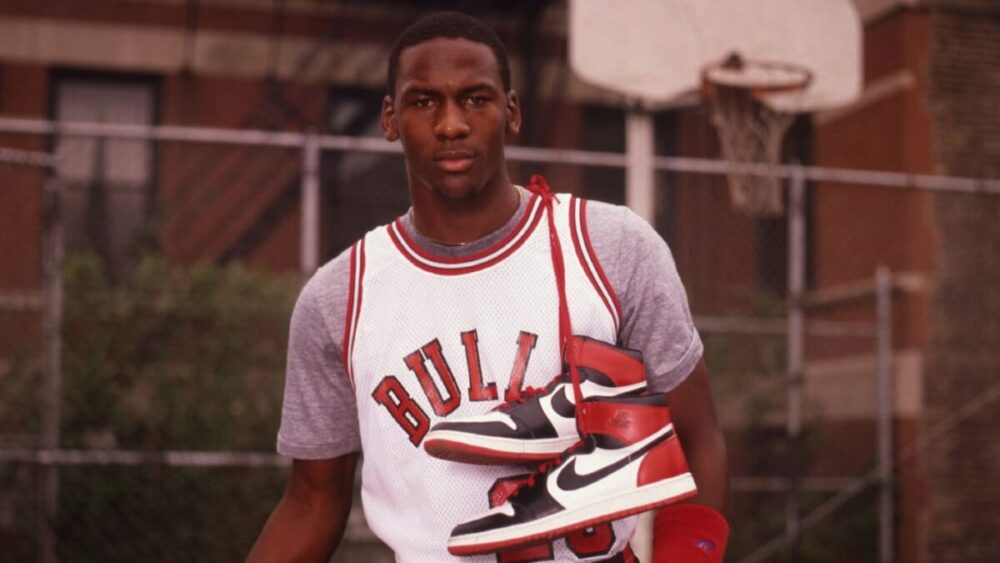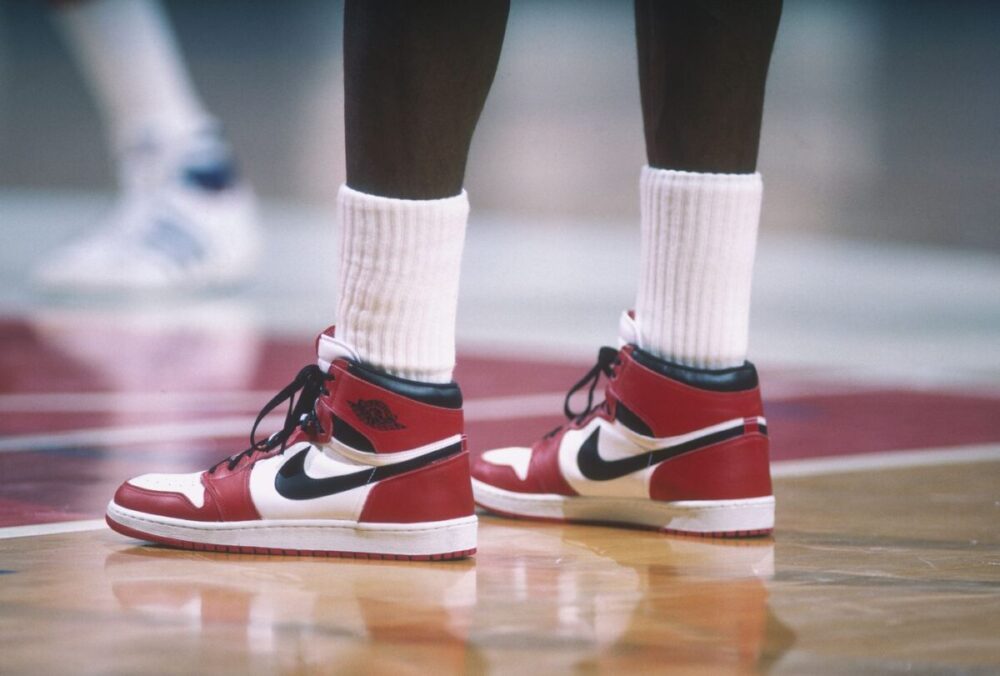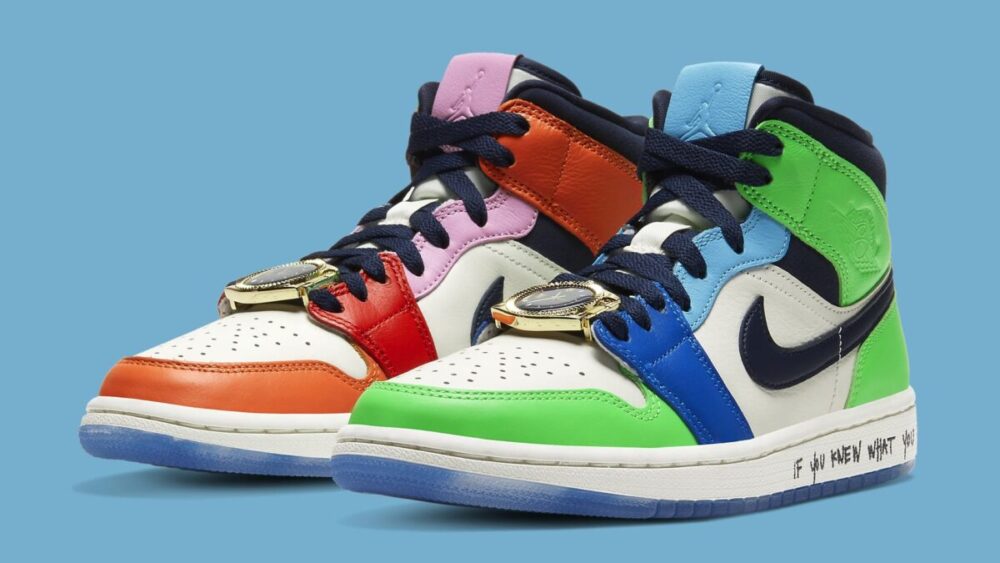
For many professional sports people it’s the sponsorship deals that they strike that can prove to be even more lucrative that the money they earn from the sport itself.
So when you see players in individual sports like tennis or golf who carry on playing despite never seeming to win any titles, this is how they make their money.
It’s a little different with players in team sports. They are guaranteed pay from the contract that they have signed with their respective franchises – but this income is also bolstered by earnings from personal sponsorship deals.
It’s a phenomenon that has always existed but there’s one deal that has helped to shape many others which have been made since it was first drawn up.
We’re talking about the deal struck between a then little-known sneaker company called Nike and an equally unknown basketball center, Michael Jordan.
In the space of nearly 40 years this is a relationship that has generated billions of dollars for both parties to the agreement and demonstrates the value that can be generated from taking a calculated risk at the outset.
The relationship begins

When the Chicago Bulls chose a young North Carolina center as third pick in the 1984 NBA draft they had no idea that he would go on to become arguably the greatest player of all time.
But there was something about him that both the team and a niche running shoe company called Nike saw in his potential.
At the time the basketball shoe market was dominated by Converse, the brand favored by high-profile players like Magic Johnson, Larry Bird and Julius Erving. Other makes were keen to move in on the potentially lucrative sport of basketball including Reebok and Adidas.
The latter were already courting the rookie Jordan and he was tempted to sign up with the German company. But, fortunately, in 1984 Nike came up with an offer he simply couldn’t refuse.
The initial deal was for a five-year $2.5 million contract, the biggest of its kind at the time. It was a gamble for Nike but, as we’ll see, it was one of the most successful ones ever made.
The arrival of the Air Jordan
It would probably have been good enough to simply have Jordan playing in a standard pair of Nike basketball boots carrying the iconic Nike “swoosh”. But the plans were more ambitious and included creating specifically-branded Michael Jordan boots.
It was his agent at the time, Michael Falk, who came up with the name Air Jordan, referencing the nickname the player had gained from performing slam dunks from the free-throw line.
There was also the ingenious idea of making the first edition Air Jordans black and red to tie in with the Chicago Bulls’ team colors.
But the basketball world of 1984 was a very different one today, not only would fans have zero chance of betting on NBA lines like they can after the 2018 Supreme Court ruling permitting sports betting, the rules also stipulated that all boots had to be white.
So every time Johnson appeared on court wearing the branded Air Jordans he was fined $5,000, a sum that Nike were happy to pay in return for the publicity they received.
This even worked out as being a strong strand in their marketing campaign for the boots with the voiceover in one ad running, “On Oct. 15, Nike created a revolutionary new basketball shoe. On Oct. 18, the NBA threw them out of the game. Fortunately, the NBA can’t keep you from wearing them. Air Jordans. From Nike”.
Later on, the brand also showed its complete mastery of marketing and advertising by recruiting Spike Lee, playing his character Mars Blackman from the movie She’s Gotta Have It to endorse Air Jordans.
Taking Nike into the big league

In the first year of the sponsorship it was predicted that the sales of the new Air Jordans would be around 3 million pairs. In reality, 126 million flew off the shelves worldwide. Suddenly Nike had gone from being on the bench to become a front-line player in the battle for sneaker supremacy.
Building on the Jordan blueprint, they have subsequently gone on to sign up players like Kobe Bryant and now have a virtual monopoly when it comes to basketball boots.
To put this into figures, Nike now has a market share of 86% in the performance basketball market with their boots adorning the feet of around 77% of all NBA players in the 2019-2020 season. They also have an even higher 95% share in the leisure and lifestyle market.
While Jordan’s involvement hasn’t been the sole reason for the phenomenal growth of Nike, it certainly wouldn’t be where it is today without it. In terms of figures, in 2022, Nike’s global revenue was just short of $50 billion, well over double the Adidas figure for the same period of $21 billion.
And, with a market capitalisation of over $190 billion, it’s very nearly eight time bigger than the $25 billion that Adidas can boast.

Jordan’s Billions
As for Michael Jordan himself, he might be 60 now and his playing days may be past him, but he is undoubtedly top of the sportsperson’s rich list with a personal fortune of $2.2 billion, and rising.
The creation of the Jordan Brand by Nike back in 1997 has certainly been instrumental in building up this huge wealth. It’s allowed the range to expand into clothing and accessories as well as to release special editions at premium prices.
As a result, it’s estimated that sales of Jordan Brand products generate $15 million worth of sales worldwide every day for Nike, for which he receives a 5% cut.
Some twenty years after he hung up his own Air Jordans for good, the company still has great future plans for the brand.
And, with new colorways in the pipeline for the iconic boots, an expansion of the clothing range and moves into other product areas, we won’t be seeing the end of this phenomenally successful partnership anytime soon.








